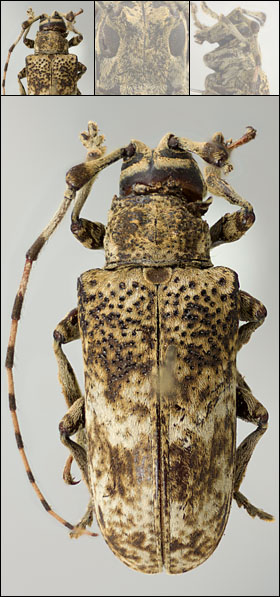
 |
| Home ¦ Twig Girdlers ¦ Key to Genera ¦ Genus Fact Sheets ¦ Gallery ¦ Morphological Atlas ¦ Glossary ¦ References ¦ About |
Genus: ProhylusDiagnostic Features
Generic Synonymies
|
 Prohylus phanthasma
holotype specimen, ♀ © E.H. Nearns |
||||||||
© 2011-2015 Nearns, E.H., Lord, N.P., and K.B. Miller The University of New Mexico and Center for Plant Health Science and Technology, USDA, APHIS, PPQ. |
|||||||||